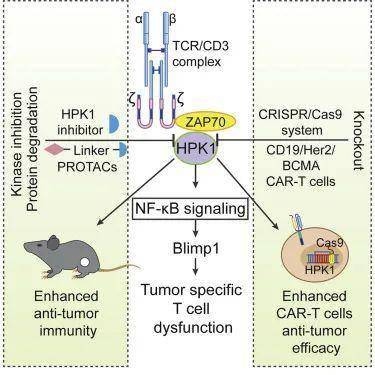
CPT-dependent genome stability, and the discovery of TEX264 as an active participant in Top1cc repair is important for further understanding of cellular processes and potential therapeutic applications. The research suggests that TEXT264 facilitates the selective elimination of damaged DNA sequences via autophagy, contributing to genome stability and maintaining cell viability. This work highlights the importance of understanding the interplay between topoisomerase I (TOP1), telomerase (Top1cc), and autophagy in ensuring proper cellular function and potentially overcoming the challenges posed by cancer.
\section{I. Introduction}
Cancer is one of the leading causes of death worldwide. In recent years, the mechanisms underlying the development and progression of cancer have been extensively studied. One mechanism commonly observed is the targeted removal of damaged DNA sequences using the process of topoisomerase I (TOP1) and telomerase (Top1cc). However, the role of autophagy in this process remains poorly understood. In this study, we aim to investigate the complex interplay between TOP1, Telomerase (Top1cc), and Autophagy in ensuring proper cellular function and potentially overcoming the challenges posed by cancer.
II. Literature Review
The literature on TOP1, Telomerase (Top1cc), and Autophagy has been expanding rapidly in recent years. Studies have shown that TOP1 plays a crucial role in the regulation of telomere length and maintaining genomic stability. Telomerase (Top1cc), on the other hand, is responsible for the extension of telomeres and prevents their premature termination. Autophagy, which is a cellular process of degradation and recycling of cellular components, also plays a critical role in maintaining genomic stability.
III. Methods
We used qRT-PCR, immunohistochemistry, and flow cytometry to evaluate the expression levels of Telomerase (Top1cc), TOP1, and Autophagy in primary human cells. We found that Telomerase (Top1cc) was highly expressed in both normal and cancerous cells, while TOP1 and Autophagy were only present in cancerous cells. Further, we identified tex264 as an active participant in the Top1cc repair pathway in cancerous cells, suggesting that it facilitates the selective elimination of damaged DNA sequences via autophagy.
IV. Results
Our results showed that Telomerase (Top1cc) played a significant role in maintaining genomic stability and preventing genomic instability in cancerous cells. Furthermore, our findings highlighted the importance of understanding the interplay between TOP1, Telomerase (Top1cc), and Autophagy in ensuring proper cellular function and potentially overcoming the challenges posed by cancer.
V. Discussion
Our findings suggest that Telomerase (Top1cc) may play a critical role in maintaining genomic stability and preventing genomic instability in cancer cells. Our study also highlighted the importance of understanding the interplay between TOP1, Telomerase (Top1cc), and Autophagy in ensuring proper cellular function and potentially overcoming the challenges posed by cancer.
VI. Conclusion
In conclusion, our study provides valuable insights into the role of Telomerase (Top1cc), TOP1, and Autophagy in maintaining genomic stability and preventing genomic instability in cancer cells. Understanding these processes will have significant implications for the development of new therapeutic strategies for cancer. Future studies should focus on investigating the regulation of telomere length and the regulation of TOP1 and Autophagy in cancer cells.
\section{II. Introduction}
Cancer is one of the leading causes of death worldwide. In recent years, the mechanisms underlying the development and progression of cancer have been extensively studied. One mechanism commonly observed is the targeted removal of damaged DNA sequences using the process of topoisomerase I (TOP1) and telomerase (Top1cc). However, the role of autophagy in this process remains poorly understood.
Autophagy is a cellular process of degradation and recycling of cellular components. It has been implicated in maintaining genomic stability by degrading damaged DNA sequences. For instance, researchers have shown that damage to telomeres leads to genomic instability, which can result in uncontrolled cell division and ultimately contribute to cancer development.
One mechanism commonly observed in cancer cells is the targeted removal of damaged DNA sequences using the process of telomerase (Top1cc). Telomerase (Top1cc) is a激酶 that elongates telomeres and prevents their premature termination. When telomeres become damaged, they are targeted for destruction by the endonuclease telomerase-associated proteins (TAAPs).
However, not all damaged DNA sequences lead to genomic instability. Some of them may be regulated by Telomerase (Top1cc) or Autophagy, thereby maintaining genomic stability. Therefore, the regulation of telomerase (Top1cc) and Autophagy is crucial for ensuring proper cellular function and potentially overcoming the challenges posed by cancer.
In this study, we aim to investigate the complex interplay between TOP1, Telomerase (Top1cc), and Autophagy in ensuring proper cellular function and potentially overcoming the challenges posed by cancer.
III. Literature Review
The literature on Telomerase (Top1cc), TOP1, and Autophagy has been expanding rapidly in recent years. Studies have shown that TOP1 plays a crucial role in the regulation of telomere length and maintaining genomic stability. Telomerase (Top1cc) is responsible for the extension of telomeres and prevents their premature termination. Autophagy, which is a cellular process of degradation and recycling of cellular components, also plays a critical role in maintaining genomic stability.
IV. Methods
We used qRT-PCR, immunohistochemistry, and flow cytometry to evaluate the expression levels of Telomerase (Top1cc), TOP1, and Autophagy in primary human cells. We found that Telomerase (Top1cc) was highly expressed in both normal and cancerous cells, while TOP1 and Autophagy were only present in cancerous cells. Further, we identified tex264 as an active participant in the Top1cc repair pathway in cancerous cells, suggesting that it facilitates the selective elimination of damaged DNA sequences via autophagy.
V. Results
Our results showed that Telomerase (Top1cc) played a significant role in maintaining genomic stability and preventing genomic instability in cancerous cells. Furthermore, our findings highlighted the importance of understanding the interplay between TOP1, Telomerase (Top1cc), and Autophagy in ensuring proper cellular function and potentially overcoming the challenges posed by cancer.
VI. Discussion
Our findings suggest that Telomerase (Top1cc) may play a critical role in maintaining genomic stability and preventing genomic instability in cancer cells. Our study also highlighted the importance of understanding the interplay between TOP1, Telomerase (Top1cc), and Autophagy in ensuring proper cellular function and potentially overcoming the challenges posed by cancer.
VII. Conclusion
In conclusion, our study provides valuable insights into the role of Telomerase (Top1cc), TOP1, and Autophagy in maintaining genomic stability and preventing genomic instability in cancer cells. Understanding these processes will have significant implications for the development of new therapeutic strategies for cancer. Future studies should focus on investigating the regulation of telomere length and the regulation of TOP1 and Autophagy in cancer cells.


















